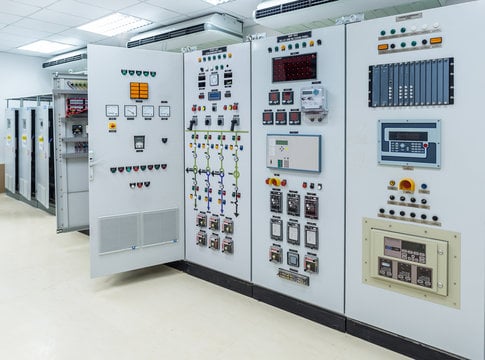Electrical arcs can develop when a gas is exposed to a voltage that is greater than the gas’ insulating capacity. An arc will occur when the voltage is high enough to ionize the space between the conductors. Ionized air improves as a conductor, allowing electricity to move through it. Ionization of the air results in a current that generates heat and bright light. The phenomenon gets its name from the way this heat causes the ionized air to rise and form an arch-shaped current. The temperature that an arc flash may reach is 20,000 degrees Celsius.
Arc flash hazards put people and property at peril. Among arc in flash’s effects on business are:
- The cost of accident investigation, production loss, worker compensation, and medical care are all examples of direct expenses.
- Examples of indirect expenses include court fees, penalties, insurance premiums, litigation costs, repairs, and replacement worker costs.
- Consequences that badly hurt your reputation, make it harder for you to compete for jobs, and raise the chance of legal trouble.
- Customers typically reject businesses with high incident rates, which results in missed business prospects and potentially the revocation of the electrical contractor’s license.
- Mishaps connected to arcs Flash has the propensity to make an impression that is hard to forget, leading to missed chances and wasted revenue.
Arc flash hazard causes:
- Using the test probe on the wrong surface.
- Using the wrong tools, installations, and work techniques.
- Using defective electrical components.
- Insulation damage or equipment gaps.
- Disconnect panel interference.
- Improperly maintaining circuit breakers and switches.
- Electrical equipment dust or corrosion.
- Exposed live parts or frayed connections.
- High voltage cables or constant power supplies.
Methods for Reducing Arc Flash Hazards:
- Disconnecting Electrical Components:
It reduces possible risks as much as is practical. Avoid working on electrified equipment and use extra caution while testing or re-energizing de-energized equipment. Using remote tracking technology, circuit breakers are maintained away from arc flash boundaries that may endanger their users.
- Use Low-Risk Technology:
In order to ascertain the risks connected with short circuits and the coordination of protective devices, arc flash analysis, and power system studies are carried out. Protect people and property by using low-threat alternatives, such as remote rack equipment.
- Redesign Electrical and Control Systems:
Ensure that PPE (personal protective equipment) is available in accordance with the category of arc flash hazard. Engineering tools and practices are being modified to reduce risks. Energy distribution systems and breakers are made to reduce incident energy.
- Reduce the Level of Available Fault Current:
Industries will be able to lower the level of available fault current with non-current limiting breakers. These tools can be used with an open tie while being maintained. The opening tie-in between dual power feeds during maintenance lowers arc flash dangers by lowering the available fault current. Arc fault current can be eliminated by using current-limiting reactors to create a bottleneck in the flow of electrical current.
- Blast Energy Shift:
To guarantee that our experts are available in both normal and emergency situations, we employ crew members in a variety of locations. We attained ISO 9001:2008 certification as well as a devoted clientele quickly. CareLabs examines arc flashes in Paris, Marseille, Lyon, Toulouse, and Nice.




